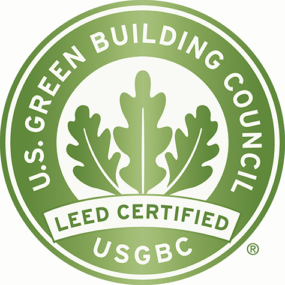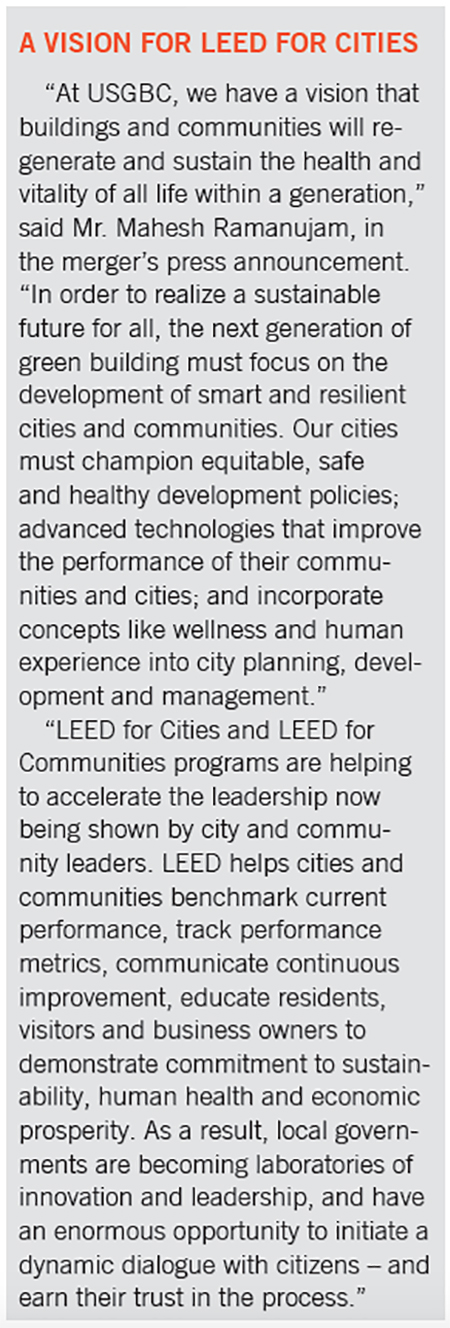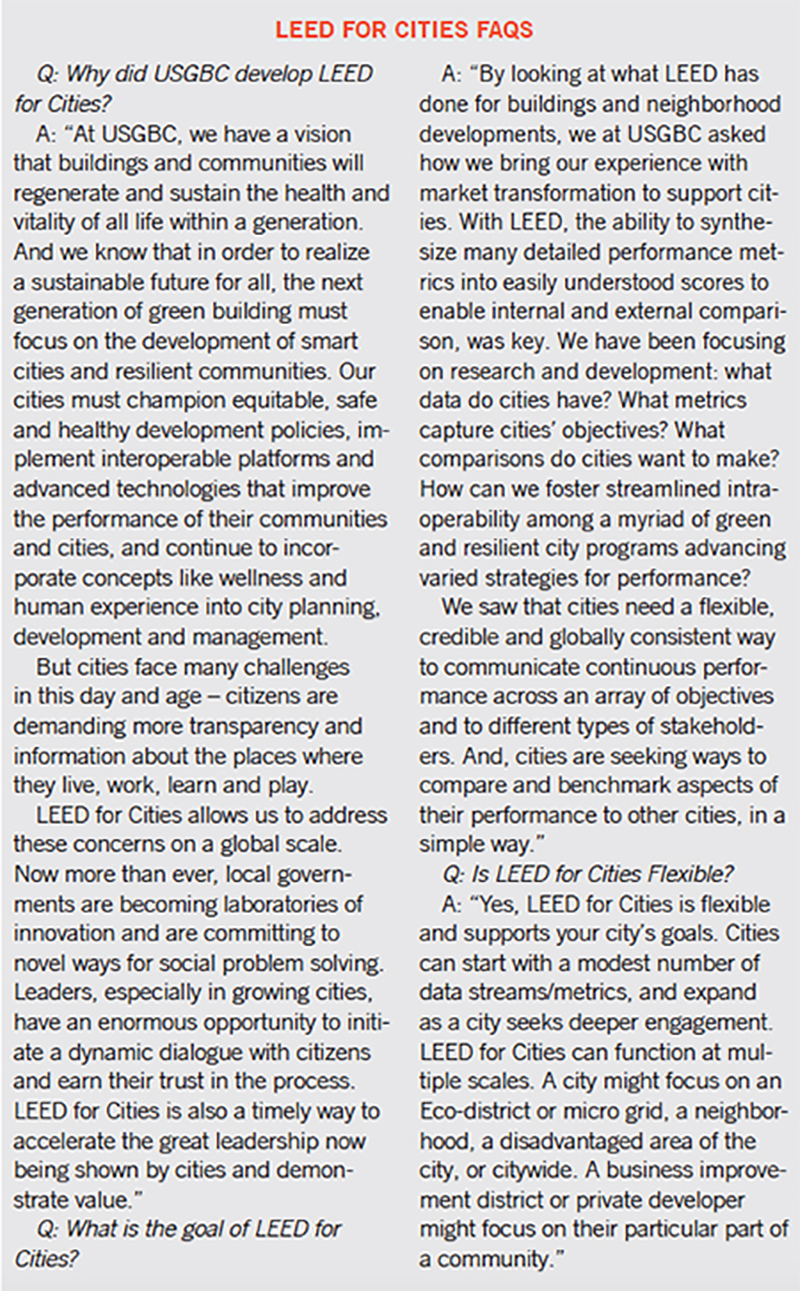LEED for Cities & Communities Expands

During Greenbuild 2018last week in Chicago, the USGBCannounced that the STAR Community Rating System, which offers certification for sustainable communities, will be fully integrated into USGBC’s own LEED for Citiesand LEED for Communitiesprograms.
We were curious to learn more about LEED for Cities and LEED for Communities programs, so we met with Vatsal Bhatt, Director of Cities & Communities at USGBC, during Greenbuild.
LEED for Cities and LEED for Communities proports to be at the intersection where smart cities meet sustainability. Launched two years ago as a pilot program, the certifications intend to provide third-party verification of the current performance of built-out cities and communities. Here is what USGBC’s LEED for Cities microsite expresses:
 “The LEED for Cities certification program is revolutionizing city planning, development and operations, while also improving life for citizens around the world. Using the Arc performance platform, LEED for Cities projects can measure and manage their city’s water consumption, energy use, waste, transportation and human experience. A detailed view of citywide performance is now at your fingertips.”
“The LEED for Cities certification program is revolutionizing city planning, development and operations, while also improving life for citizens around the world. Using the Arc performance platform, LEED for Cities projects can measure and manage their city’s water consumption, energy use, waste, transportation and human experience. A detailed view of citywide performance is now at your fingertips.”
“LEED for Cities brings a new level of leadership to cities around the world. Use LEED for Cities to benchmark your city’s current performance, and transform your city into the place to be. Home in on the targeted metrics for a particular initiative and communicate continuous improvement; educate residents, visitors and business owners to enable continuous improvement; demonstrate your city’s commitment to sustainability, human health and economic prosperity.”
“We’ve been working on buildings for 25 years,” said Mr. Bhatt. “Buildings are a key part of our cities, and they have a big impact on our cities. But many years ago, the USGBC began working really hard to develop a more holistic discussion about sustainability, and that meant widening the circle to include cities, and everything in them.”
“This focus on wellness – applying what we’ve done with LEED in buildings to people, and how people feel – is central to our mission. It’s not my city, it’s our city, and a combined quality of life for everyone in that city.”
 A full Guide to LEED Certification: Cities and Communities Pilotis available for download, and the structure of how the program is organized can be found here, but in a nutshell:
A full Guide to LEED Certification: Cities and Communities Pilotis available for download, and the structure of how the program is organized can be found here, but in a nutshell:
A city’s first step toward certification in LEED for Cities, is to register their city in the Arc performance platform; learn more about registration and certification fees here. Then, with the support and guidance of the LEED for Cities team, a city will submit their project overview, goals, strategies and roadmap to the USGBC for precertification.
After executing the proposed project, a city would then apply for initial certification by submitting performance data and methodologies and receive a score for review from GBCI.
“To generate a Performance Score, participants input data across five categories – Energy, Water, Waste, Transportation, and Human Experience,” notes the website. “Cities must complete all precertification requirements and may provide additional information to achieve points to increase the Base Score, which contributes to the total Performance Score.”
The city would then continue to submit performance data and receive a score for ongoing certification.
“The things cities are dealing with – energy, water, waste, transportation, resilience plans and more – are intricately connected to the health and safety, equity and quality of life of the people in that city,” said Mr. Bhatt. “Each city is different, and the needs are different, and because these things are so unique to each city, I cannot prescribe to you a uniform way of achieving success.”
“The cities discussion is so subjective, that speaking in a normal, ‘prescriptive LEED’ way – ‘do this, this and this’ – would never work. With LEED for Cities, we’re trying to ask these questions in a different way. We’re trying to meet you where you are, by using your real data – your numbers – to make the process more objective. We want to use and talk about your numbers in a way that normalizes it for each city.”
The merger with STAR Communities, the nonprofit that runs the STAR Community Rating System, will increase the manpower and the tech behind the LEED for Cities program.
“The 75 cities and communities that have achieved STAR certification and the 20 additional cities and communities that are seeking STAR certification will now transfer into the family of LEED for Cities and LEED for Communities,” noted the press document announcing the merger. “Hilari Varnadore, the director of the STAR Communities program, has also joined USGBC as the director of the LEED for Cities and LEED for Communities programs.”
There will be more coverage to come in officeinsight as LEED for Cities continues to expand. Stay tuned!




